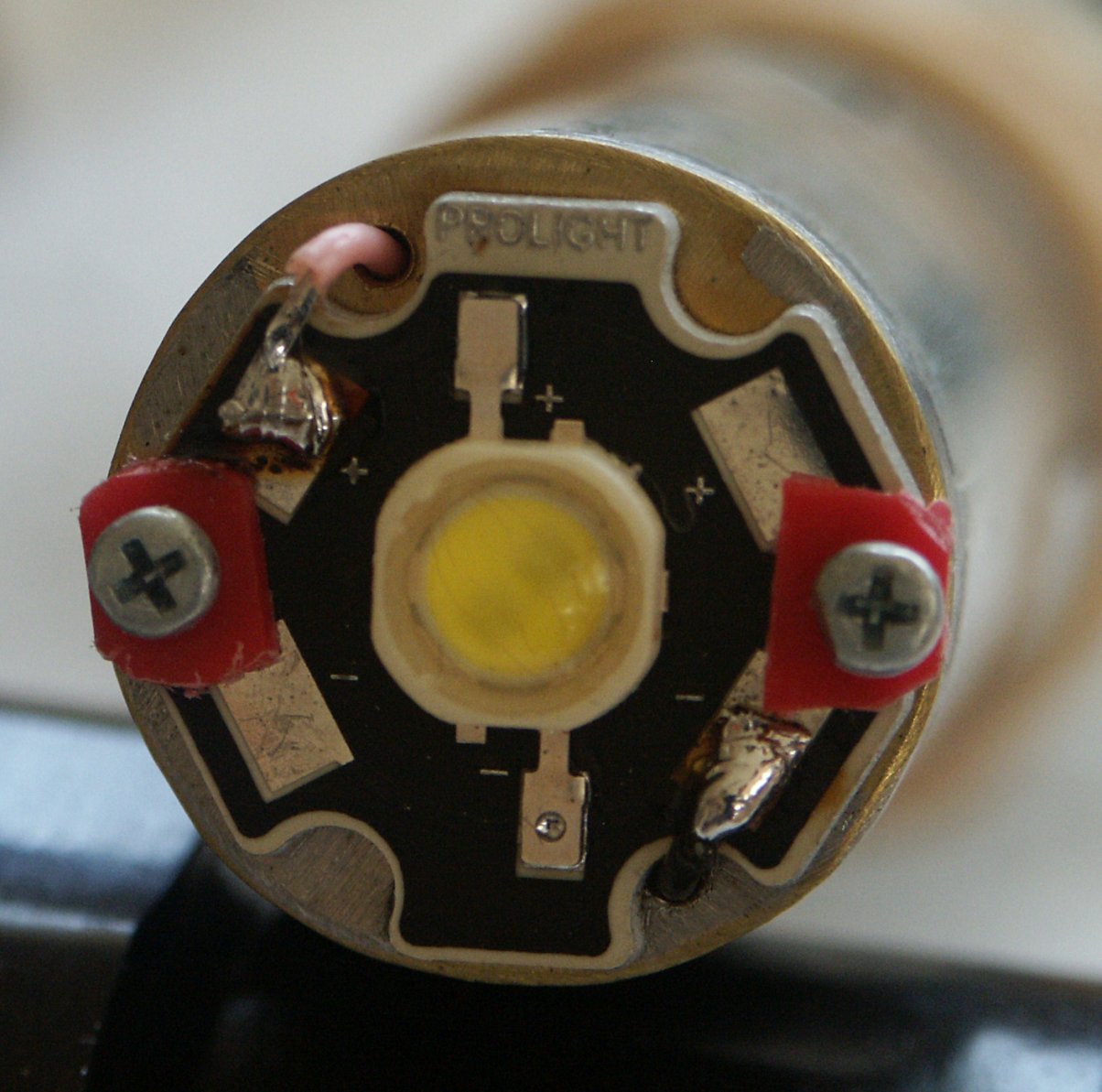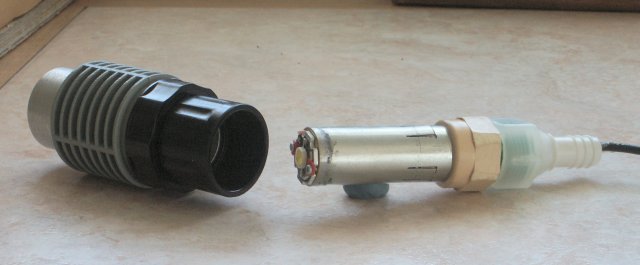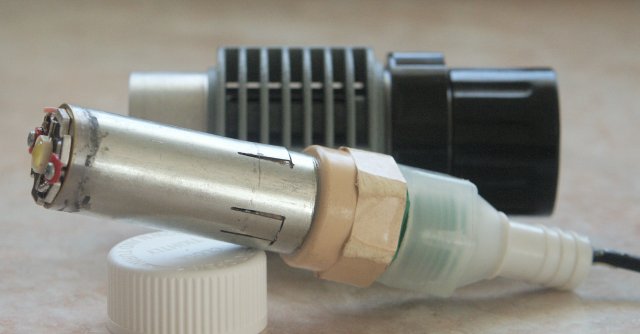

by Rudolf Baumueller, USA
The original light of the MBC-10 microscope is easy to use, and gives good illumination for most of the projects I have so far undertook, but it is very hot, and so I converted it to LED light source of 3 Watts power. This gives the same brightness as the original bulb. I also don’t have to worry about the light bulb expiring on me; there are only 3 of them in the package.
First I made a box out of an old board of teak wood, and left enough room for the complete original light with the new LED holder plus the new power transformer and all the wires. The lid can be removed to store all items; the electric circuitry is also inside under the storage compartments floor. To get to the electronics, the front can be removed.

The power supply is a charger for a cellular telephone, which supposed to give 5 volts at 750 mA. I wanted to run the LED at 3.55 volts with a maximum of 700 mA. This called for a 2.2 Ohm resistor.
But my Fluke multimeter says there are 5.65 volts. That made the LED run at 3.89 volts, which is still in tolerance. I found a 10 turn precision wire wound potentiometer of 25 ohms in my odds and ends box that made me very happy, because they are expensive. So I connected the power supply positive to the on/off switch, then to the end of the potentiometer, and from the middle connection of it to my 2.2 ohm resistor, to make sure, there will never be more than the allowed maximum mA to the LED. From that 2.2 ohm resistor the power goes to the LED’s connector, which is mounted in the front panel. The negative runs from the power supply direct to the LED connector.

When everything finally got tested with the multimeter set to mA and connected between the 2.2 ohms resistor and the LED, it showed 650 mA maximum, and about 220 mA minimum with the potentiometer at 25 ohms, that is good, so I do not run it at the allowed max of (700 mA) at all.


The LED gets a little warm at full power, but it is not much. The LED holder is made out of some plastic plumbing connections, with a short piece of steel curtain rod that I soldered a brass plate on to carry the LED, which is screwed on to that with steel screws and plastic washers made from a red bottle cap. The steel curtain rod was just a little loose in the condenser housing, so I cut little tabs into the sidewall of the rod, and bent them out a bit.
I ordered the LEDs at Best Hong Kong, which have sent them very fast and with only $3.57 shipping charges. Good service and good prices.
http://www.besthongkong.com/index.php?osCsid=ae72e362c37fdf7e8ee8d16500e70ffa.
The 2.2 ohm resistor came from Mouser Electronics.
Maybe in the future I will get an inexpensive digital multimeter and mount the readout onto the front panel of the light box, so one can always repeat the exact illumination by just reading the mA indicated.
I got the information about the Star LED from a Micscape article: Star LEDs for two Lomo microscopes, written by Robert R. Pavlis.
All comments to the author Rudolf Baumueller are welcomed.
Microscopy
UK Front Page
Micscape
Magazine
Article
Library
Please report any Web problems or offer general comments to the Micscape Editor.
Micscape is the on-line monthly magazine of the Microscopy UK website at Microscopy-UK